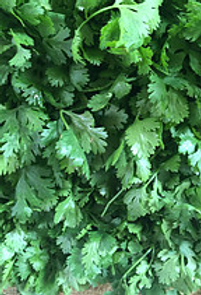Whenever I talk about cilantro with friends, I always get the same reaction. Either they love it or they hate it! Those who love it like to make fresh salsas and bean salads with it. Those who hate it say it tastes like soap. For me, though, I happen to love it. Since the majority of the people I know like it, I decided to explain the best way to grow cilantro. Read on and see why cilantro is an international herb, learn how to grow it, and learn about some of its uses.
(Some of the links within this post are affiliate links on which I receive a small compensation from the sale of certain items.)
(As an Amazon Associate I earn from qualifying purchases.)
An International Herb
Cilantro is one of the most widely used herbs around the globe. You can find it in dishes from Thailand, India, and China, to Mexico and the countries in the Caribbean. It is also popular in the Mediterranean, Northern Africa and Eastern Europe.
In addition to those regions, cilantro is widely used in the Middle East.
In fact, a study from 23 and Me found that most people in the Middle East, South Asian, and Hispanic countries liked cilantro, approximately 93 to 97% of the people!
Statistics are somewhat different in East Asian and African countries. The same study showed 14 to 21% of these people disliked cilantro. That’s a lot of people who do not like cilantro!
Smelly Cilantro
So why do so many people dislike cilantro?

Their main complaint is that it smells like soap. A genetic link has been found among those who dislike cilantro. Apparently certain people’s olfactory receptor genes (those genes responsible for detecting smells) have slight variations that send a soapy aroma message to their brains when smelling cilantro. These receptors pick up the smell from the aldehydes in cilantro leaves, which give them their aroma, when they are released. These aldehydes produce what some people perceive as a soapy smell of the plant.
That explains why some say it smells like soap and will not eat it. My daughter is one of them!
Best Way to Grow Cilantro
Cilantro is a rapid grower. It passes through its stages rather quickly and will not last very long in your garden. It is also an annual. However, if you let the seeds drop in the fall, they will probably produce new plants in the spring.
Cilantro does not like to be transplanted so it is best to sow the herb from seeds. (SeedsNow.com) It also does not like the heat of summer, so sow the seeds in the spring and fall. Planting in succession as you would lettuce will insure having cilantro throughout a season.
Planting Seeds in Succession
1. Begin by choosing a spot in your garden that gets sun with some shade. Also select a large area so you can plant seeds in succession. You can purchase cilantro seeds at SeedsNow.com.
2. Next, amend the soil with an organic substance to make it rich and well drained.
3. Once the soil is churned and mixed well, plant the seeds 7 to 8 inches apart. Pat them with some soil about a quarter inch deep.
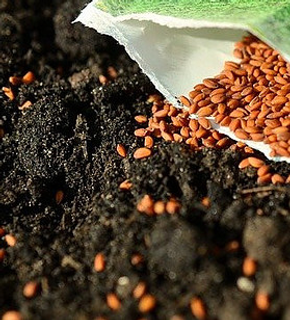
4. Keep the soil moist but not waterlogged.
5. The germination period is between 1 and 3 weeks.
6. Once the plants begin to emerge and are around 2 to 3 inches tall, thin them out.
7. Pinch out the main tips to produce bushier plants.
By growing the plants in succession, you will have constant growth. Do this by planting more seeds every few weeks. Follow the above directions for sowing your seeds.
If you prefer to not purchase more seeds, allow the plant to flower and then seed. The cilantro plant will reseed on its own.
Below is a YouTube video of how to grow cilantro from seeds.
Cuttings
Try propagating another cilantro plant from cuttings.
You can start another plant from cutting 5 to 8 stems from your existing plant about 5 inches long. Strip them of their bottom leaves about 1 inch high and place them in a glass of water. Refer to my post Best Way to Grow Rosemary under the title propogating rosemary and follow those directions. This process works for most herbs.
Cilantro roots do not like to be disturbed so handle them gently when transplanting them into the soil.
Harvesting Cilantro
Not many people know this, but you can eat all parts of the cilantro plant, the leaves, stems, flowers, seeds and roots! They do not all taste the same, though. The leaves and stems are much more flavorful than the flowers and roots. The seeds have a distinct flavor all their own.
When harvesting cilantro leaves, do not cut more than a third of the plant. This will promote new growth.
Leaves and Stems
Harvest the leaves and stems using sharp scissors or a sharp knife. Cut the stems about one inch from the soil and cut in the morning or evening. Do not allow the plant to flower.
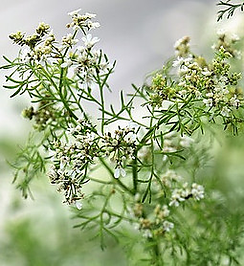
Use the leaves and stems in your favorite curries, soups, and meat and fish dishes. It’s best to add the cilantro toward the end of the preparation because the fresh cilantro will lose its flavor if it is cooked too long.
Flowers
The cilantro plant will flower from the center on a long stem if you do not harvest the leaves and stems. The flower has a more subtle flavor than the leaves. Harvest the flower before it yellows or browns and again, add it to your dish right before serving or use it as a garnish.
Harvest the flowers in early morning or evening.
Seeds
If you leave the plant to flower, it will eventually turn to seed. This seed is known as coriander.
You can either harvest the seeds when they are green or later when they turn brown. Pick them off individually or gather the stems up-side-down and place them in a brown paper bag. Then wait until they drop on their own.
They are edible at any time and could be crushed with a pestle and mortar, lightly toasted or deep fried in a pan, or ground into a powder (the dried out brown seed is used for grinding). They have a warm, citrus, curry, light and sweet flavor.
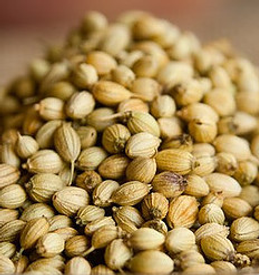
Coriander is used in stews, Indian curries, stir fries, soups and recently in many craft beers.
Roots
Roots can be harvested during any time of the plant’s life. Although, I would harvest them at the end of the growing period. I would think you’d like to reap the benefits of the plant when the cilantro is growing stems, leaves, and flowers before digging away its roots!
Thoroughly rinse the roots and finely chop them. Add them to curries, soups or stews.
Growing Cilantro Indoors and in Pots
Cilantro is finicky with its environment. It does not like extreme direct sunlight, so it’s probably better to grow it in a pot if you do not have a spot in your garden conducive to growing cilantro.
Planting in pots (POTEY Cement Planter Flower Pot – 7.3″ Vintage Indoor Plants Container available on Amazon) has many benefits. You can keep them inside and/or move them around outside for optimal sunlight.
If you choose to grow cilantro in a pot, choose a pot approximately 8 inches in diameter and 8 inches deep. Cilantro has a tap root which will extend deep into the pot.
Use a good potting soil such as Miracle Gro Performance Organics All Purpose Container Mix, available on Amazon, and follow the instructions above for propagating cilantro from seeds. You only need 3 seeds per pot and once they begin to grow, thin them out to 1 plant per pot.
Keep it in an area where it will get 4 hours of direct sunlight and keep the soil moist but not soggy.
If you’d rather try an innovative indoor hydroponic way of growing herbs, try purchasing the Miracle Gro Twelve Indoor Growing System. It simplifies everything using water, LED lighting, and blue tooth. It’s available on Amazon.
Cilantro Uses
Culinary
Cilantro is used around the world. Some culinary uses are to spice up:
- salad dressings and salads
- pico de gallo
- smoothies and juices
- stir fry
- guacamole
- infuse oil
- garnish, seasoning and marinades
- summer drinks
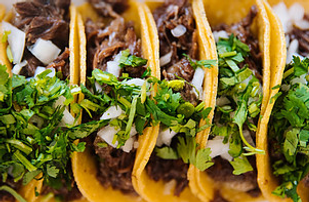
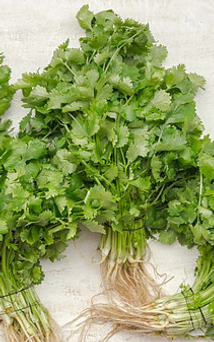
Nina’s Bean Salad Recipe
Ingredients:
- handful of fresh cilantro, about 8 stems worth; washed and diced
- 1 can black beans drained and rinsed
- 1 can sweet corn drained and rinsed
- 1 red bell pepper chopped into 1/4 inch pieces
- 1 cup cherry tomatoes cut into pieces
- 3-4 sliced jalapeno peppers, fresh or from a jar (add as much as you’d like)
- 1 tablespoon lime juice (or squeeze one fresh lime)
- 1 tablespoon olive oil
Directions:
Combine all the ingredients into a large bowl and refrigerate for at least 4 hours. Overnight is better.
Medicinal And Beauty:
Below are some uses for cilantro. As always, consult a physician before using this herb as a substitute for standard medicines. Some herbs may interact poorly with some medications.
- Use as a face mask to calm down acne and brighten up your face. Refer to Prevention Magazine to learn some DIY cilantro masks.
- Reduces anxiety.
- Balances blood sugar levels.
- Improves heart health.
- Protects your brain.
- Prevents food poisoning.
Although it is claimed that cilantro will help with the above conditions, it has not been scientifically proven.
Cilantro – A Versatile Herb
Cilantro, sometimes known as the soap herb (not really, only by me!!), can be grown in your garden or in a pot. It does take a little more nurturing and because it is so short lived, you need to keep propagating it if you’d like an abundance of cilantro. However, it is well worth the effort given the many uses of this herb. I highly recommend you try growing this very versatile herb.
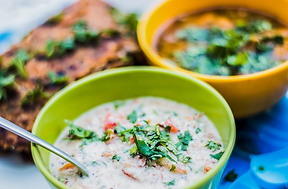
Please leave a comment below. I’d love to hear about your success with cilantro.


